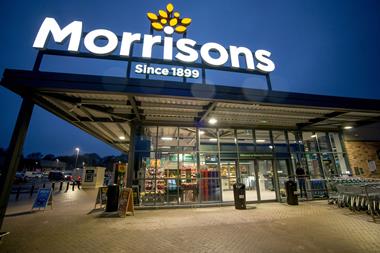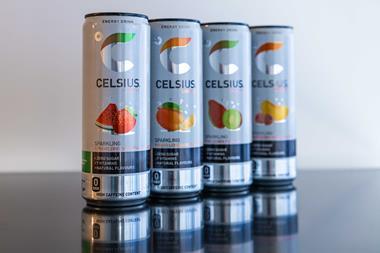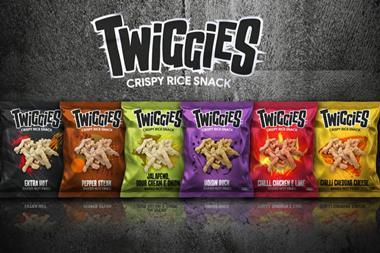The character licensing industry is under growing pressure to clean up its act. It's under fire from an increasingly vociferous health lobby that accuses it of not using licensing in a responsible way. With worries about children's health and obesity soaring up the agenda, manufacturers are scrambling to get film and cartoon characters selling better-for-you products.
And where the number of character-licensed confectionery and biscuit products remain numerous, suppliers are being forced into a defensive corner, claiming that they should be regarded as treats and not part of the everyday diet.
"Manufacturers and licensors are acutely aware that the media spotlight is on them, and they are all working to make products in accordance with guidelines," says Andrew Levy, MD at Licensingpages, a company that provides information for the licensing industry. "It is unfortunate that the media have chosen the character licensing industry to be the scapegoat, because it is not just an issue concerning this sector."
The major players can claim to have acted, with Heinz and Premier Foods linking characters to healthier canned pasta.
But an even healthier direction, probably more indicative of future directions, is represented by Buxton Foods, with its organic Peter Rabbit food and drinks range for children. Launched in 2003, Peter Rabbit Organics was developed specifically with the licence in mind, unlike most cases where the licence is applied to an existing product. "Our products have fared very well and we have a very positive view of the market, mainly because we have a brand with very clear ethical principles," says Katie Towers, who runs marketing and branding. "Consumers are responding extremely positively to the lines."
With listings in Tesco, Waitrose, Sainsbury's and independents, Towers says Buxton Foods has received many requests from other licence holders to create similar healthy brands using their characters.
The success of Peter Rabbit Organics suggests that there is a definite awareness among licence holders that just slapping a picture of a cartoon character on any product range prepared to pay for it is no longer good enough. "Peter Rabbit Organics is a good example of character licensing being used responsibly," says Levy. "Licensed characters provide theatre at retail, which is important, and stimulate children's interest in food. Used responsibly, this can work well.
"Shaping foods such as chicken pieces can help kids to eat protein, but the way forward, really, is to add value and ensure a well balanced eating regime for children."
The total market for character licensed food and drink is believed to be stagnant, although the size of the market is hard to quantify because of the diverse number of product categories it covers.
What is clear though is that while character licensing has been embraced by other industries, including toys and textiles, the food and drink industry has been slow on the uptake.
One reason for this is that food and drink companies are happier developing and using their own unlicensed characters, such as Nestlé's Milkybar Kid or Billy Buxton on the mineral water brand, which can be much cheaper than paying a licensor.
Yet, Gareth Pugh, consultant at brand and design agency Dragon, says that this is not always an effective approach.
"Kids are as savvy as any other consumer and can spot characters that have been created by the product manufacturer solely for the brand," he says. "Unless the children are particularly young, such characters can have a harder time making as meaningful an emotive connection with their audience as popular characters."
The market is also suffering from retailers' unwillingness to list products that use relatively unknown characters, says Levy. "Retailers these days tend to go for tried and tested brands that have been around for a while and have copious amounts of consumer awareness and affection. They are more risk averse than ever before in their quest to improve margins and maximise sales per square inch. This means they are far less likely to stock a new character licences than before."
At first sight, fruit does not appear to be a market that lends itself to character licensing but here, in what consitutes a positive PR move for the practice, Disney Consumer Products has been making an impact.
Indeed, Disney may have stolen a march by asserting that instead of taking an apologetic approach, licensing should be a weapon of choice in driving healthier eating. This summer it linked up with Somerfield and Tesco for a range of Disney-branded fruit, a move aimed at linking its characters with healthy eating instead of fast food.
The venture has proven enough of a success for the company to be working on extending the range. "Licensing is very effective when it comes to making kids choose healthier options," says Justine Finch, director of food, health and beauty at Disney UK.
"We have to take the responsibility to develop stronger ranges or portion control. Licensed characters also have the opportunity to educate kids in a fun way about healthier foods and lifestyles."
Tesco this year began selling satsumas and clementines that carried the collectible stickers of Winnie the Pooh characters, but care needs to be taken if value is to be maintained when it comes to character licensing of fruit and vegetables, warns Levy, because consumers will only be willing to pay more for fresh produce if they are getting something extra.
"Simply slapping a character on an item of fruit is not enough," he says. "We would suggest that incorporating a toy or other promotional mechanic involving a character will help the process and engage children with the food.
"This will enable higher margins to be achieved because the consumer will be buying an added value product."n













No comments yet